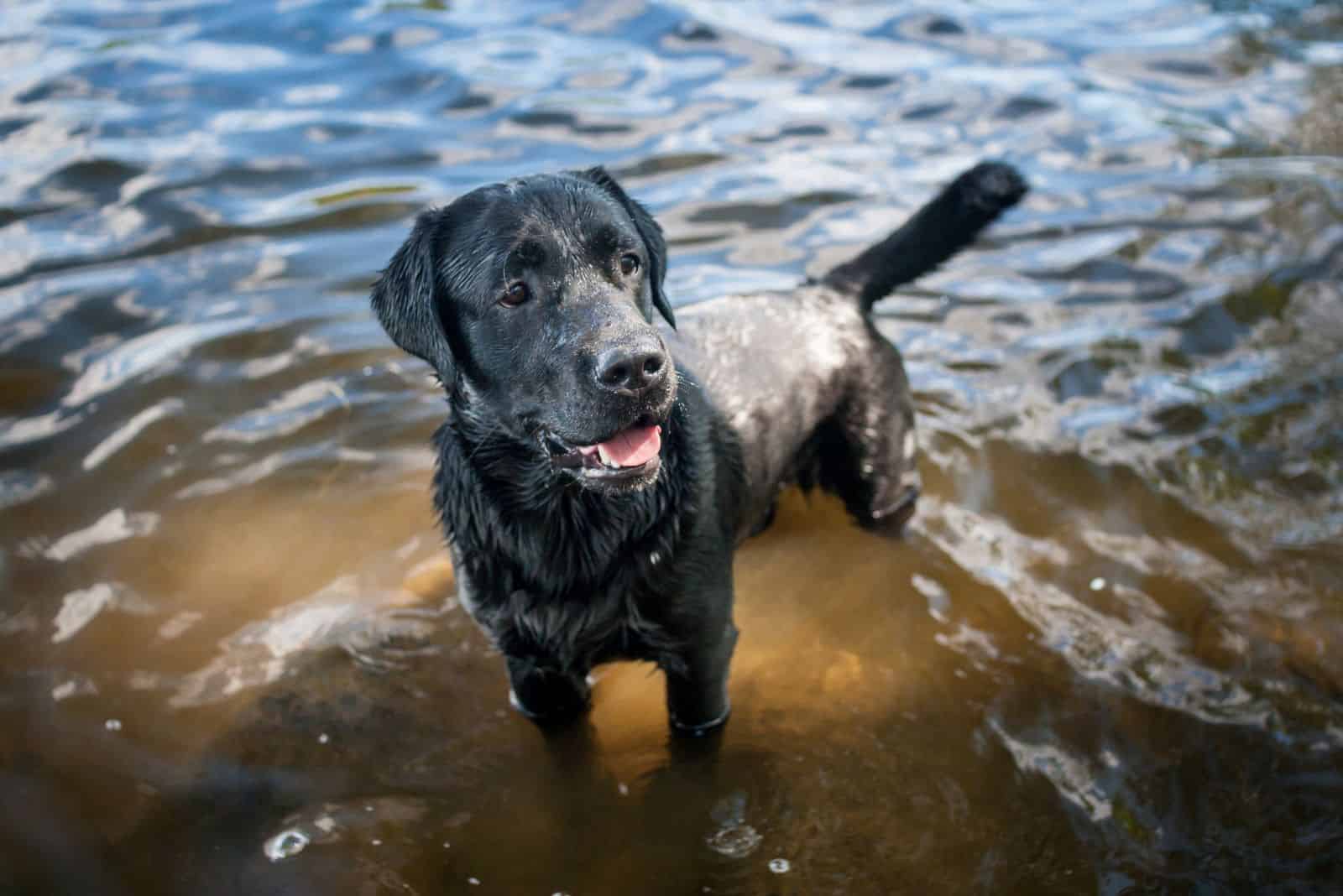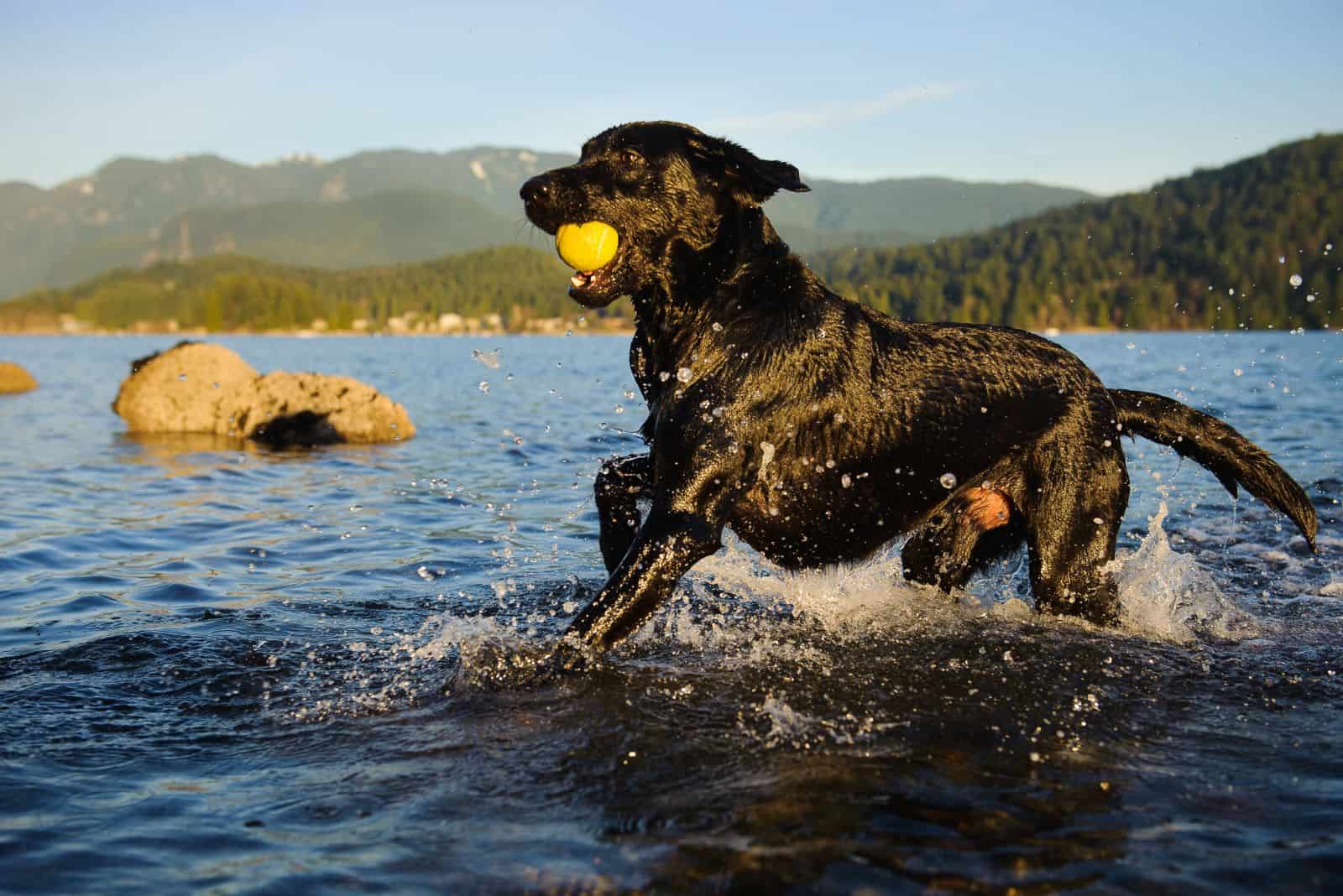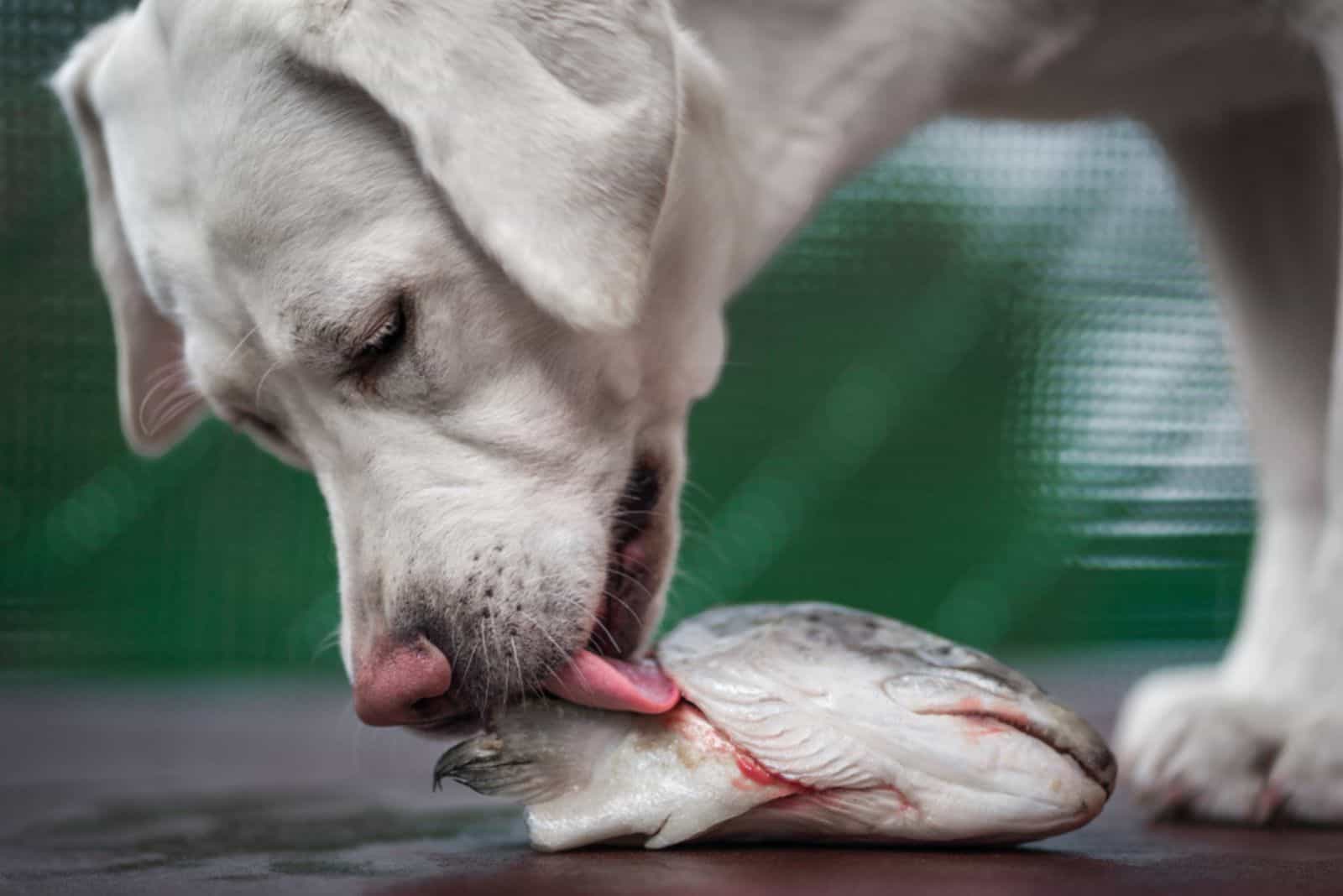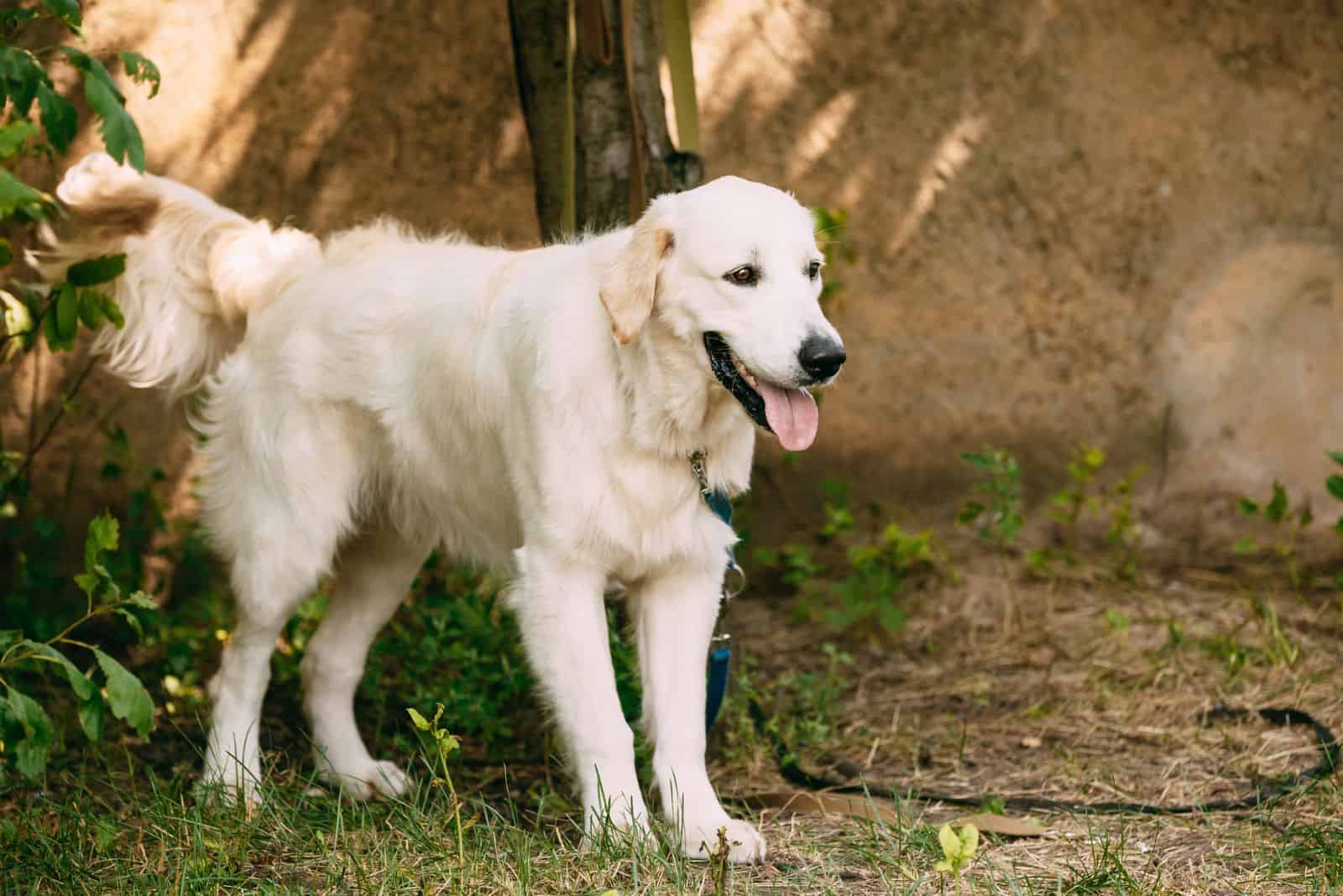Nowadays, we rarely get to reminisce of dogs that gave us so many of the best breeds in the world. The Labrador Retriever, Newfoundland, and several other retriever type dogs owe their existence to St. John’s water dog.
Most of the physical and temperament traits found in modern day retriever dogs are an inheritance from this oldie breed. Unfortunately, its status as an extinct breed means we cannot enjoy their companionship anymore, but we get close to it through Labs and Goldens.
What made them so fond of water and loyal workers for the fishermen? Well, we are about to find out that and much more about these mermaids among dog breeds.
Canadian Heritage Of A Sturdy Body And Composed Mind

The most popular breed in the United States is the Labrador Retriever, with their Golden cousins sitting in third place. Let me tell you straight away. This is not a coincidence.
With English and American versions of the Golden Retriever, and plenty of Labrador retriever colors, the breeds seem to exhibit a wide variety of subtypes that all originate from the same dog.
Two of the most renowned retriever dogs in the world have a strong connection to the now extinct St. John’s water dog. Genetically, the Newfoundland dog is further to its ancestor, than the Lab and Golden, which are probably better representatives of the St. John’s temperament.
It is still a mystery as to what this Canadian dog’s origin is. Without records mentioning any particular dog breed’s presence in the Newfoundland island region of Canada, we can only assume that St. John’s water dog was a mixture of several breeds with domestic Newfoundland dogs.
At the time, the advances in shipbuilding and map drawing sped up world exploration, leading sailors and explorers from Portugal, Spain, France, and England to the coast of Newfoundland. Simultaneously, fishermen and workers sought better opportunities by sailing along to Canada.
Some of them brought their own working dogs, while others arrived without canine companions. Both types of immigrants were greeted by the local dogs that were skilled at pulling logs, carts, sleds, retrieving fowl, and baiting and retrieving fish.
Clearly showing high intelligence levels, the St. John’s water dog was also built for the freezing temperatures and cold water. A water-repellent coat and rather large size provided resilience to cold and plenty of stamina for pulling sleds packed with firewood for miles.
Mystery surrounds the actual authenticity of the earliest depictions of St. John’s water dog, but some information about its size and feats does exist. Years and miles apart, the domestic dog from Newfoundland started “branching out” into different versions according to location.
Records On Size, Coat, And Temperament

It is believed that the OG St. John’s water dog was a medium to large dog with no less than three names. Some called it St. John’s Newfoundlands, some St. John’s dog, while others preferred Lesser Newfoundland.
There is definitely nothing lesser about this dog. According to unverified records, male St. John’s weight between forty and ninety pounds, and reaches heights of twenty-two to twenty-four inches.
Female dogs are slightly smaller at thirty-five to eighty-five pounds in weight and grow as tall as twenty-one to twenty-three inches. This corresponds to the measurements of our Labrador Retriever growth chart, further closing the gap of differences between the two breeds.
There is no specific data describing the body proportions of the St. John’s, but historical records show that it is most similar to today’s English Labradors. That means a stocky body frame with substantial bone thickness, strong neck, and broad chest.
Its weight pulling strength does indicate that they were pretty muscular, with Thomas Brewick (English woodcarver) measuring its length from nose to tail at six feet two inches. As every apt swimmer dog, the St. John’s had webbed feet and a short, smooth coat to glide through water.
Coat Quality And Colors
The presence of a thick undercoat below the dense, short outer coat helped this breed develop superior cold resistance. Whether a pack of St. John’s water dogs pulled a sled filled with hundreds of pounds of firewood or retrieved fish and fowl, the coat was freeze-resistant.
Later portrayals mention a dog of similar stature but with a long outer coat. However, this was probably a further mix of the St. John with other working type dogs. Perhaps it was the Newfoundland dog that bore a big resemblance to this version of the water dog.
One color combination was the St. John’s trademark look – the black main coat color with a white cross on the chest. After other working dog breeds started being bred with the “Lesser Newfoundlands”, the color options extended.
Interestingly, a red-coated male and black-coated female St. John’s survived a shipwreck and swam to the coast of Maryland. This (un)lucky incident was the making of the Chesapeake Bay Retriever, known for its unique shades of red color.
Fish Catcher In The Morn, Worker Extraordinaire During The Day

St. John’s water dog is known for its impeccable fishing prowess. Records by many explorers and artists, including Brewick, Colonel Peter Hawker, W.E. Cormack, and many others, say that English hunters and fishermen were astounded by the dog’s intelligence.
It was smart enough to excite the shallow waters to attract fish, and loyal enough to know its way around the land while pulling heavy carts with firewood. Without any human guidance, St. John’s water dog finished its work and returned home or to the coast.
The sociable nature of the ancestral retriever meant they enjoyed human companionship. Many accounts of the dog’s playfulness and ability to entertain people by playing fetch, dancing, etc., witness the fact that Labs and Goldens are their true progenitors.
Despite many people considering Labradors the worst dogs as family pets, history and their number one ranking for most popular dog breed in the United States prove it to be a false statement, and the St. John’s water dog legacy lives on.
A strong working drive is apparent in the St. John’s resolve to dive many feet below the surface of the water only to retrieve a stone or piece of wood used in playing fetch. This kind of dedication truly mirrors that of modern day retrievers.
Playing fetch and enticing fish without any training shows that they were observant and trainable dogs. They lived in packs, so cohabitation with other dogs was nothing strange to the St. John’s water dog.
Although not the most renowned guardians in the world, they were decent watch dogs. Their people-friendly temperament was enough to love the people close to them, but be on the lookout for intruders, too.
St. John’s Water Dog Lifespan And Diet
With the scarcity of information about general breed characteristics, health records are all but non-existent for the St. John’s. Its life expectancy is estimated to have been between ten and twelve years, just shy of the Labrador Retriever’s eleven to thirteen lifespan.
The lack of concrete information on the life expectancy means that Newfoundland’s favored canine was valued for its working ability and high intelligence rather than companionship. Of course, they had that role as well, but it was not a primary concern.
Food availability was a problem at the time, and in the freezing weather of the Newfoundland island, fish was the main source of calories for the St. John’s water dog. It came in different forms, such as raw, dry, or even cooked, with trout being the preferred meal.
In the modern day and age, we cook chicken and rice for our dogs, but not without using some supplements to include a comprehensive diet. Fish, however, has proven to be a great source of protein, fatty acids, iron, calcium, and other crucial nutrients for a healthy dog.
Why Did St. John’s Water Dog Become Extinct?
It was primarily because of their rather low numbers in the first place. Newfoundland’s scarce population of canines meant that the few dogs European fishermen and workers encountered were diluted by crossbreeding with other working dogs.
As the St. John’s population was further reduced by imports into England and other countries, the outbreak of rabies in the late 19th century forced the government to stop any incoming specimens of the breed.
Travel by sea was dangerous, and many St. John’s water dogs died in shipwrecks or due to poor living conditions aboard the vessels. The last two survivors died in the 1980s, and the fact that they were both males signified the impending extinction.
Summary
Enigmatic as it is, the St. John’s water dog left us some of the smartest and most human-centric dog breeds in existence. Extinction did not deter them from living vigorously through Labrador Retrievers, Golden Retrievers, Chesapeake Bay Retrievers, and other water dogs.
In the span of a couple of hundred years, we still cherish their hunting, retrieving, and companionship roles, but mostly value them for their “personality” and exquisite companionship. I would say that the St. John’s water dog is not extinct but simply revamped.
